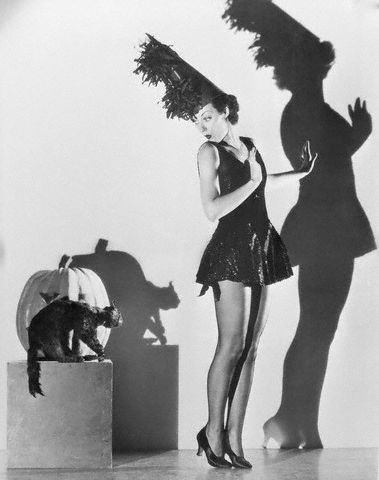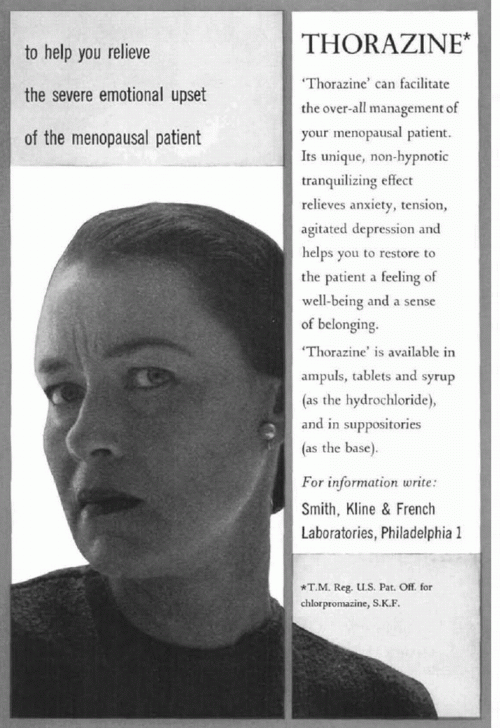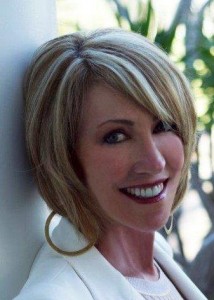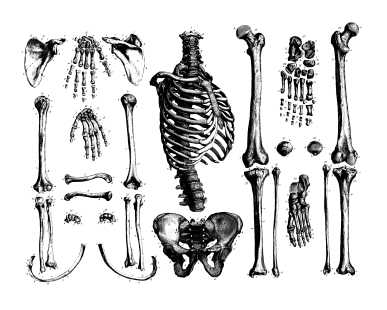Wednesday Bubble: Trick or…
Treat?
This Halloween, you may want to take a look at the ingredients before you apply your make up. In fact, researchers from Washington University in St. Louis reported last week that certain chemicals found in make up and plastic — pthalates — may actually trigger early menopause. On average, the findings, which are based on blood or urine samples from roughly 5,700 women, showed that higher levels of pthalates led to significant disruptions in women’s endocrine systems that were linked to starting menopause as much as 2.3 years earlier. And in some women, menopause began as much as 15 years earlier than average.
Speaking at last week’s American Society for Reproductive Medicine Annual Meeting, lead study author, Dr. Natalia Grindler, cautioned that the findings are too early to draw any firm conclusions. However, this is not the first time that pthalates have been linked to adverse effects, and in fact, they have been closely watched and regulated for years now.
This year’s treat? Read the label. It might scare the bejeesus out of you! Even better? Sign up for the Environmental Working Group’s Skin Deep Cosmetic Database. This invaluable resource is being updated but is scheduled to be accessible soon. Finally? This time, beauty is really skin deep!
Read More
Menophrenia
Back in the Fifties, they used to treat menopause the way that they treated schizophrenia — with Thorazine. Evidently, the medical community also used Thorazine to treat nausea and vomiting, ‘senile agitation,’ and acute alcoholism. In other words, it was a psychiatric wonderdrug, creating zombie-like hormonal women, senile men and nauseated children across the U.S.
But back to women….I can only wonder why, at the time, no one thought to coin the term ‘menophrenia,’ i.e. emotional upset of the menopausal patient?
Welcome to the dark side of menopause and vintage advertising. Creating zombiepausal women everywhere!
Read More
Shmirshky? A guest post by author Ellen Dolgen
Do you recall when I wrote about Shmirshky and took a mick out of the book? If not, this little excerpt might stir your memory…
Truly, when I first laid eyes on Shmirshky.com, I wanted to hate it. Why? Because I don’t like cutesy names for vaginas like “shmirshky.” And I don’t really understand the tagline or book title – ‘think inside the box’ or ’pursuit of hormone happiness’. Nor do I care for abbreviations like “PM and M” (i.e. perimenopause and menopause) or “SUMO,” the author “E’s” (read: everyone) imaginary friend who makes her feel bad about herself….
Well, here I am, a year and a half later, running a guest post by the book’s author, Ellen Dolgen, who I had the pleasure of meeting in New York last month. When I met Ellen, I asked her about the derivation of shmirsky. This is why I’m eating crow today. Ellen is an incredible woman and this story, well, it’s damn special.
Shmirshky. Yup. We should all be so lucky.
Show some love. And Happy Birthday Ellen!
I love a gal who says what’s on her mind. When I read Liz’s review of my book, it made me smile.
I was definitely brought up calling my vagina a vagina, but I can’t really remember using the word vagina in a sentence until I was well into adulthood. As Eve Ensler puts it in her famous Vagina Monologues:
“Let’s just start with the word ‘vagina.’ It sounds like an infection at best, maybe a medical instrument: ‘Hurry nurse, bring me the vagina.’ ‘Vagina.’ ‘Vagina.’ Doesn’t matter how many times you say it, it never sounds like a word you want to say. It’s a totally ridiculous, completely unsexy word. If you use it during sex, trying to be politically correct – ‘Darling, could you stroke my vagina?’ – you kill the act right there.”
Still, I love my vagina. I love being a woman, and I was angry when I found I was totally unprepared for and uneducated about perimenopause and menopause. I decided to do something to prevent other women from suffering like I did. My book is a cut to the chase, conversation opener that women can read, discuss, and pass along to their friends and family.
Since Liz, in her review of my book, was most troubled by my use of the word “shmirshky” instead of “vagina,” let’s get that off the table right off the bat! I had a very special mentor in my life. Her name was Marcia. She used to call the vagina, shmirshky. The penis, erlick. I thought it was hilarious. She would be going on and on about shmirshkies and erlicks, and those seated next to us in a restaurant thought she was talking about a new restaurant or perhaps even a law firm. Marcia was vivacious, smart, and endlessly loving. In 2002, at the age of 72, she was diagnosed with cancer. Toward the end of her illness, she was at home with amazing Hospice care, and it was her birthday. I wasn’t sure if we should celebrate or not mention it since I knew this would be her last birthday.
I will never forget that October day. We arrived at Marcia’s condo with balloons, a cake, and presents. She was wheeled into her living room – and immediately she beamed! For her gift, I had paid off a shawl she had on layaway at her favorite consignment store, and she squealed with excitement when she saw it, wrapping the shawl around herself. Just for a moment, we all forgot that Marcia’s days were ending. With joy in her eyes, she left me one last monumental pearl of wisdom: make every day your birthday. So, in honor of my
BFF (birthday friend forever), I decided to call my book about vaginas – Shmirshky!
Alone and unprepared when my menopausal journey began, I drew on Marcia’s spirit and wisdom. My intro to perimenopause was sudden and fierce: my memory disintegrated, my emotions were out of control, I couldn’t sleep, I became a member of the sisterhood of the shrinking pants, and my vagina took a trip to the Sahara desert. I felt like an alien had taken over my body. After years of struggling, I began journaling about my experiences as a way to escape from all the loneliness and confusion. I also hoped my journal could be a guide to perimenopause and menopause I would give to my daughter that she could use when she got older. When I started looking for answers, I visited my local bookstore and left with 10 books on menopause. For weeks, I buried myself in these books trying to absorb the information within them. Everything I found was way too clinical and better at inducing sleep than at teaching me what I needed to know to get the help I needed. I realized the book I wanted to read did not exist, so I decided to write it myself. I carefully researched and interviewed other women, pharmacists, and specialists. Eventually, a book emerged that was truly new and distinct from anything else I had seen. In addition to providing the information a woman needs to begin her journey through perimenopause, I felt, and still feel, that my book opens the conversation in a way that is fun, positive, accessible, and empowering. It’s a girlfriend’s guide chalk full of useful tools – just enough detail and written with compassion, empathy, and – the most important element – humor.
My mission since publishing Shmirshky is to empower women to get the help they need and deserve. I share my own story in the hopes that others feel comfortable breaking the taboo surrounding perimenopause and menopause, so we can build support networks for ourselves, our daughters, our friends, anyone who has or knows someone who has a Shmirshky. Don’t like that word? Then, call it your vagina, call it your box, your beaver, your ya-ya. Whatever you call it, we all need to reach out and speak out, using whatever language feels comfortable, to connect, unite, and empower the sisterhood!
My motto is: Reaching out is IN! Suffering silence is OUT!
Happy Birthday Liz!
About Ellen Dolgen…
Ellen Dolgen is a Health and Wellness Advocate, Menopause Awareness Expert, Author, Speaker, and health blogger.
Ellen is the author of Shmirshky: The Pursuit of Hormone Happiness — a cut-to-the-chase book on perimenopause and menopause that’s filled with crucial information, helpful guides, and hilarious and heartfelt stories. Known for her humor, compassion, and sassy personality, Ellen has appeared on numerous television and radio broadcasts, including: the Rachael Ray Show, The Doctors, Oprah Radio, Playboy Radio, “Tell Me More” on NPR, Doctor Radio, and dozens of other regional and national media outlets. Ellen is a frequent guest on the popular radio show, “Broadminded,” on Sirius XM Radio (Stars XM 107) and is a regular contributor on Huff/Post 50 along with blogging for many leading women’s health sites. Ellen has dedicated herself to women’s wellness through a wide breadth of activities ranging from being a founding board member of the UCSD Student Wellness Center, working with pharmaceutical companies in helping them to effectively address women’s health needs, serving on hospital advisory boards, and advocating for cardiovascular health.
Read More
Wednesday Bubble: U.S. Preventive Services Task Force Recommends Against Use of Hormone Therapy for Chronic Disease Prevention
I just can’t help myself. It’s Monday. But this news item calls for a Wednesday Bubble. And yet another nail in the HRT coffin.
The U.S. Preventive Services Task Force (USPSTF) issued an update to its 2005 statement on hormonal therapy late this afternoon. It reads:
“The U.S. Preventive Services Task Force (USPSTF) recommends against the use of of combined estrogen and progestin for the prevention of chronic conditions in postmenopausal women” (evidence grade D – There is moderate or high certainty that the service has no net benefit or that the harms outweigh the benefits).
“The USPTF recommends against the use of of estrogen for the prevention of chronic conditions in postmenopausal women who have had a hysterectomy (D recommendation).
Wondering what this means?
The USPTF recommendations are clear that they refer to the use of HRT and hormone therapy for the purpose of reducing a woman’s risk of developing certain chronic diseases, such as heart disease or dementia and not for the purpose of treating considering hormone therapy for menopausal symptoms such as hot flashes or vaginal dryness/atrophy. However, they are also clear about the data that explores the use of hormone therapy for chronic diseases, noting that while combined HRT has been shown to decrease the risk for fractures, this decline is accompanied by an increase in the risk for serious events that include:
- stroke
- invasive breast cancer
- dementia
- gallbladder disease
- blood clots in the veins or lungs
Additionally, they report that data do not demonstrate a decrease in heart disease and even show an increased likelihood — 1.22 times the norm — for some type of heart event.
For estrogen alone, they again note the benefits in terms of fracture reductions and even a small decline in risk of developing or dying from invasive breast cancer (e.g. 8 fewer cases or 2 fewer deaths per 10,000 person years). However, estrogen-alone has also been associated with “important harms” including:
- stroke
- blood clots in the veins
- gallbladder disease
Like combined hormone therapy, estrogen alone does not reduce the risk for coronary heart disease.
The Task Force also points out that both forms of hormone therapy have been associated with an increased incidence of stress, mixed or urge urinary incontinence after one year.
Mind you, naysayers will say that the average age of women participating in the Women’s Health Initiative were a bit older than the vast majority of women who are transitioning through menopause. To a certain extent, the Task Force agrees, calling for “new research to help better define whether there is a differential balance of benefits and harms based on age at initiation, duration of use and dose or delivery mechanism. Still, they conclude with “high certainty that there is zero to negative net benefit for the use of combined estrogen and progestin therapy for the prevention of chronic conditions and concludes with moderate certainty that there is no net benefit for use of estrogen alone.” Moreover, major health organizations are aligned with the new recommendations. For example, the American Heart Association and American Congress of Obstetricians and Gynecologists recommend against using hormonal therapy to prevent heart disease. The Canadian Task Force on Preventive Health Care and American Academy of Family Physicians are totally aligned with the USPSTF in terms of the use of hormonal therapy to prevent chronic illness in postmenopausal women. Even the North American Menopause Society, a huge proponent of hormone therapy, does not believe that hormones should be used to protect the heart or prevent dementia.
Let’s place the recommendations in context.
By the time most women reach menopause, they are expected to live at least 30 additional years. During this time, they have varied risks for developing chronic diseases, ranging from 30% for coronary heart disease and 21% for stroke to 22% for dementia and 11% for breast cancer. In an accompanying press release, Associate Professor of Medicine and of Epidemiology and Biostatistics at the University of California, San Francisco , Dr. Kirstin Bibbins-Domingo, says “the Task Force recommends a number of important preventive measures women can take to prevent chronic diseases, including quitting smoking and identifying and treating high blood pressure and high cholesterol. There are also other effective ways that women can reduce their risk of bone fractures, such as weight-bearing exercise and being screened and treated, as appropriate for osteoporosis.”
In other words, speak to your practitioner about evidence-based strategies to maintain good health and prevent disease. In this case, the evidence for HRT in disease prevention efforts during menopause is scant and the risks appear to outweigh the benefits.
Read More
Capture the fracture
Sounds like a new reality show for the over 50 set right? But it’s pretty serious.
A new report from the International Osteoporosis Foundation (IOF) demonstrates that one in two women over the age of 50 are at risk for fragility fractures that may be related to bone loss and not only trauma. In other words, broken hip bones, or bones in the wrist, arm or their vertebrae — usually resulting from a fall — may be a signal that something else is also at play. Moreover, the IOF reports that approximately 80% of both men and women who are treated at clinics or hospitals falling a fracture are not receiving screening for osteoporosis, osteopenia (low bone mineral density) and associated risk for future fractures.
So, why does this matter?
Well, according to IOF statistics, half of people who ultimately end up with a fractured hip in old age had a fragility fracture when they were younger. Moreover, 1/6th of menopausal women have had some sort of fragility fracture in their lives. Considering that women in particular lose up to 50% of their spongy, or trabecular bone (the network that makes up most of bone structure) and up to 30% of their cortical bone (the outer shell) within the first 10 years of the onset of menopause, and the body is creating a perfect storm. According to the IOF, up to a quarter of hip fractures can be prevented by early diagnosis and appropriate osteoporosis testing and follow up treatment.
Mind you, the treatments for osteoporosis are controversial. As I’ve written previously, the most popular drugs for osteoporosis — bisphosphonates — may be risky after about 5 years of use and even increase fracture risk in some women. However, there are important non-pharmacologic steps that can be taken to counterbalance risk, such as:
- Weight bearing exercise
- Insuring that you don’t sit too long at any given time while at work (women who sit for more than 9 hours a day have a 50% increased risk of hip fracture)
- Strengthening back muscles, which can help prevent vertebral fractures
- Insuring that adequate amounts of low-fat dairy, tofu and certain green vegetables are included in your daily diet. Note that some plant foods contain substances that can lower amounts of available calcium to the body, e.g. oxylates in spinach and rhubarb or phytates in dried beans, so you want to be sure to counter that with vegetables like broccoli, kale and bok choy, which are low in these substances.
Even if you eat a proper diet and exercise daily, you are still at risk of bone loss and fracture – it’s a natural result of aging and waning estrogen. However, if you are fifty or older and suffer a fracture, heck even if you are slightly younger, request a screening for bone loss and osteoporosis. The IOF says that most clinicians don’t follow this path — possibly due to cost concerns, time or even where the responsibility for care even lies. The latter is particularly important and is much like the ‘Bermuda Triangle,” where experts say that patients can disappear into a maze of “orthopedists, primary care physicians and osteoporosis experts” only never to be seen again (until they break a hip).
As always, information is power and the first point of care is truly you. Want to stay standing well into old age? Capture the fracture now.
Read More











